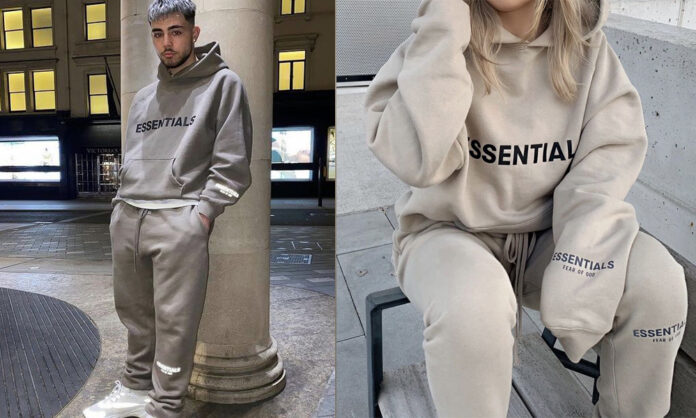The Cultural Influence of the Essentials Hoodie on Fashion
The Essentials Hoodie has become a staple in modern wardrobes, transcending its basic function to embody various cultural influences and societal shifts. This iconic piece of clothing reflects broader trends in fashion, identity, and social commentary, making it a significant player in the landscape of contemporary style.
Historical Context
The Essentials Hoodie has its roots in the early 20th century, originally designed for practicality and comfort. It gained popularity among athletes and laborers, valued for its warmth and ease of movement. However, it wasn’t until the late 20th century that the hoodie became a cultural symbol, particularly within urban communities.
In the 1970s and 1980s, the rise of hip-hop culture played a pivotal role in the hoodie’s transformation. Influential artists like Run-DMC and Tupac Shakur adopted the hoodie as part of their signature looks, using fashion as a means of self-expression. This association with hip-hop contributed to the hoodie’s identity as a symbol of youth, rebellion, and authenticity.
Influence of Streetwear
The hoodie’s integration into streetwear further solidified its cultural significance. Brands like Supreme, Off-White, and Fear of God embraced the hoodie, merging urban aesthetics with high-fashion elements. The Essentials Hoodie, in particular, exemplifies this blend, characterized by its minimalist design and emphasis on comfort.
Streetwear culture celebrates individuality and self-expression, allowing wearers to showcase their personalities through fashion. The hoodie serves as a canvas for creativity, often featuring bold graphics or unique styling that resonates with various subcultures.
Social Commentary and Identity
Beyond fashion, the hoodie carries deeper social implications. Its association with marginalized communities has sparked conversations about identity, race, and societal perceptions. High-profile incidents, such as the tragic case of Trayvon Martin, highlighted the stereotypes and biases surrounding hoodies. This tragic event turned the hoodie into a symbol of resistance against racial profiling and injustice, transforming it from a simple garment into a powerful statement of solidarity.
The Essentials Hoodie enables individuals to express their beliefs and affiliations. It can signify belonging to a particular group or movement, making it a versatile tool for personal identity. As fashion increasingly intersects with social issues, the hoodie continues to play a role in cultural dialogue.
The Rise of Athleisure
The athleisure trend has further enhanced the hoodie’s status in modern fashion. As lifestyles have shifted towards comfort and functionality, the Essentials Hoodie has emerged as a key piece in this category. It can be worn for various activities—from workouts to casual outings—blurring the lines between activewear and everyday fashion.
This versatility makes the hoodie appealing to a wide audience, catering to those seeking both comfort and style. Brands have responded by designing hoodies that prioritize both aesthetics and performance, reinforcing the garment’s significance in contemporary wardrobes.
Celebrity and Influencer Culture
Celebrity culture has significantly influenced the popularity of the Essentials Hoodie. Many celebrities and influencers incorporate hoodies into their casual looks, making them highly desirable among fans. Public figures like Kanye West, Rihanna, and A$AP Rocky have showcased hoodies in various contexts, merging high fashion with street style.
Collaborations between high-fashion designers and streetwear brands have further elevated the hoodie’s status. Essentials Tracksuit When luxury labels incorporate hoodies into their collections, it validates the garment as a fashionable choice, encouraging mainstream acceptance.
Sustainability and Ethical Considerations
As the fashion industry increasingly confronts issues of sustainability, the Essentials Hoodie has the potential to reflect a more ethical approach to clothing. Many brands are focusing on sustainable materials and ethical production practices, appealing to a growing number of consumers who prioritize eco-friendly choices. This shift towards responsible fashion aligns with broader cultural movements advocating for sustainability and social responsibility.
Conclusion
The Essentials Hoodie is more than just a comfortable piece of clothing; it represents a rich cultural narrative that spans history, identity, and social issues. From its origins in practicality to its status as a fashion icon, the hoodie continues to evolve, reflecting the values and aspirations of each generation. Whether worn as a symbol of resistance, a canvas for self-expression, or a trendy wardrobe staple, the Essentials Hoodie encapsulates the complexities of modern fashion and culture, ensuring its relevance for years to come.
